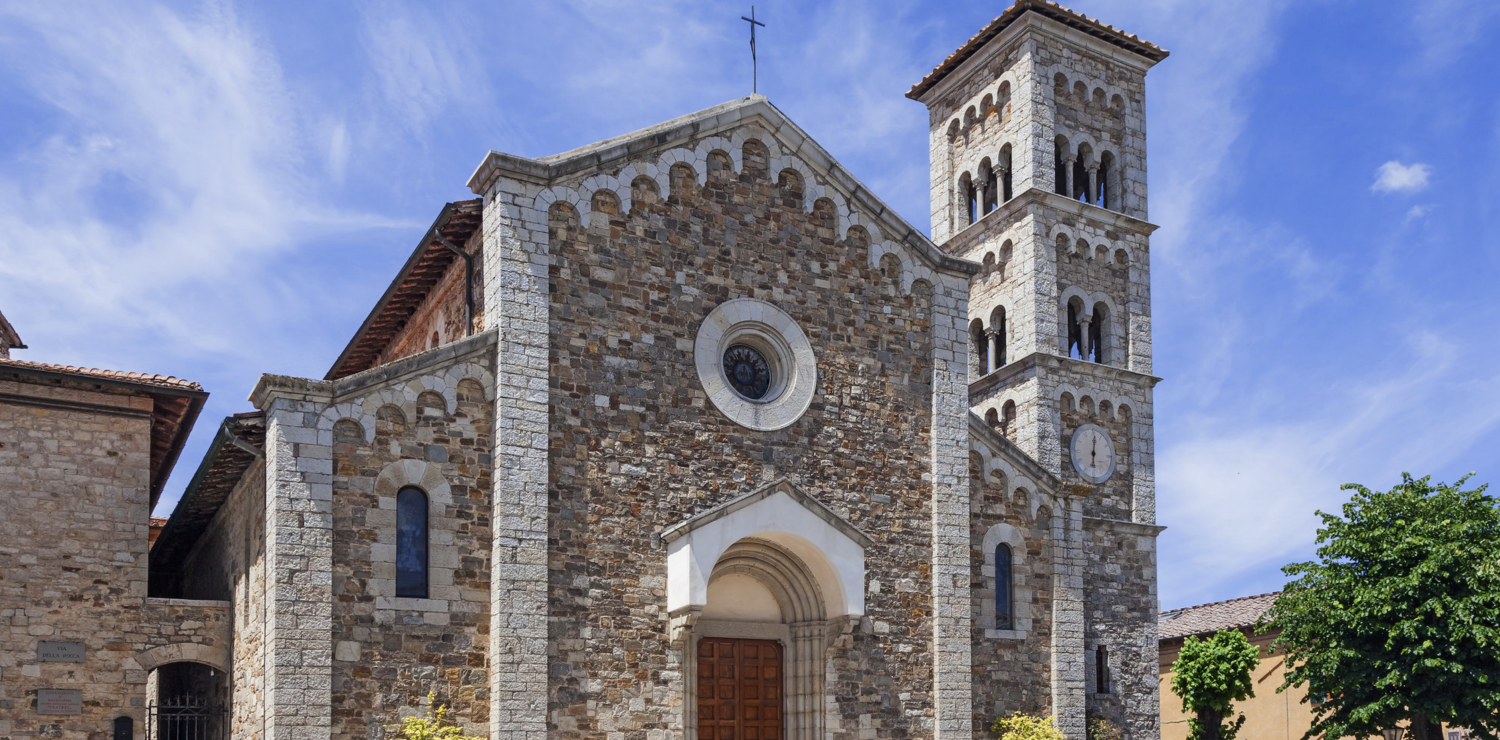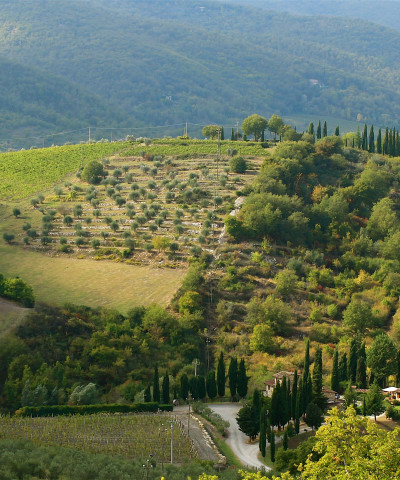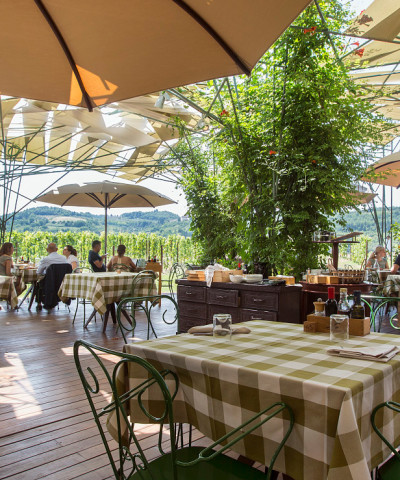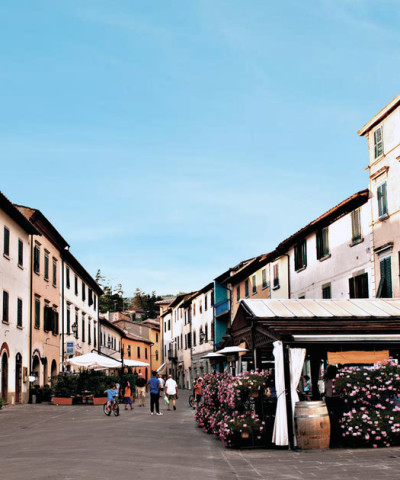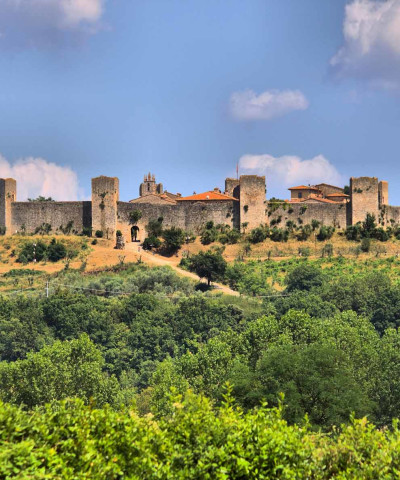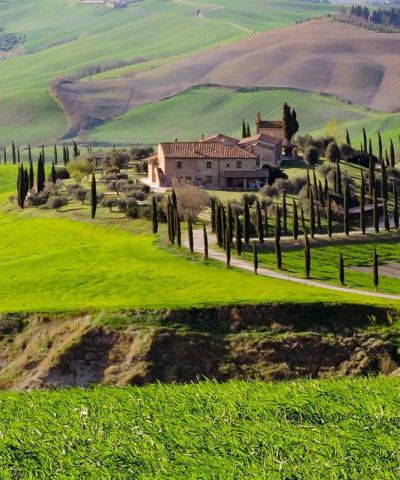Castellina in Chianti: what to do, where to eat and where to sleep
Restaurants, hotels, wineries, churches, villages and all there is to discover about one of the most beautiful lands of Chianti
Castellina is one of the Chianti areas known worldwide thank - together with Greve, Gaiole, Panzano and Radda - to its resources and natural beauties. It is situated at the border of chiantigiana area’s slopes, a strategic position along the present regional road S.R. 222 which links Siena to Florence. Its location, on the ridge that dominates Valdelsa, was the cause of never ending battles between Siena and Florence Republics (hence the legends like that of the Gallo Nero).
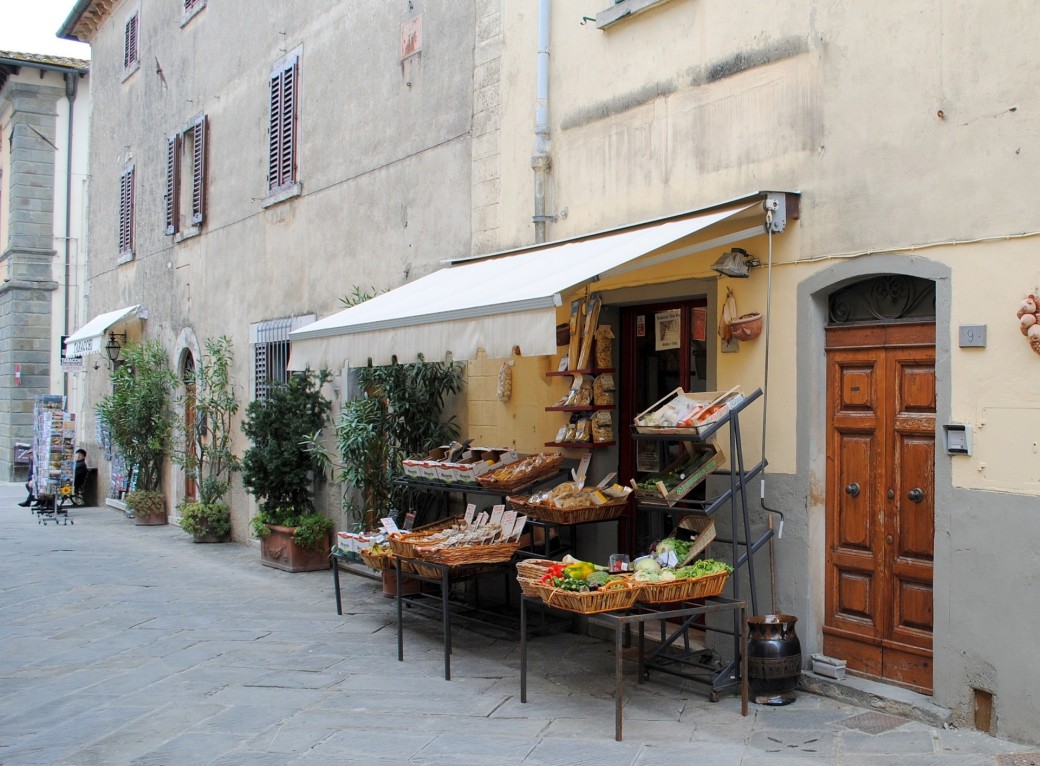 Castellina in Chianti ph Dieter Ludwig Scharnagl
Castellina in Chianti ph Dieter Ludwig Scharnagl In 1200 Castellina was the Lega del Chianti’s capital (which was formed by Gaiole in Chianti and Radda in Chianti too) but in 1500 joined the Grand Duchy of Tuscany and lost its strategic value, becoming an agricultural center. In 1944, during the II World War, it suffered the German troupes’ retreat which destroyed two of the most important land’s symbols: the ancient Florentine entrance and the San Salvatore’s church. In Castellina you will feel the historical atmosphere that encase this territory and you will be able to visit several attractions such as castles, museums or churches that represent its essence.
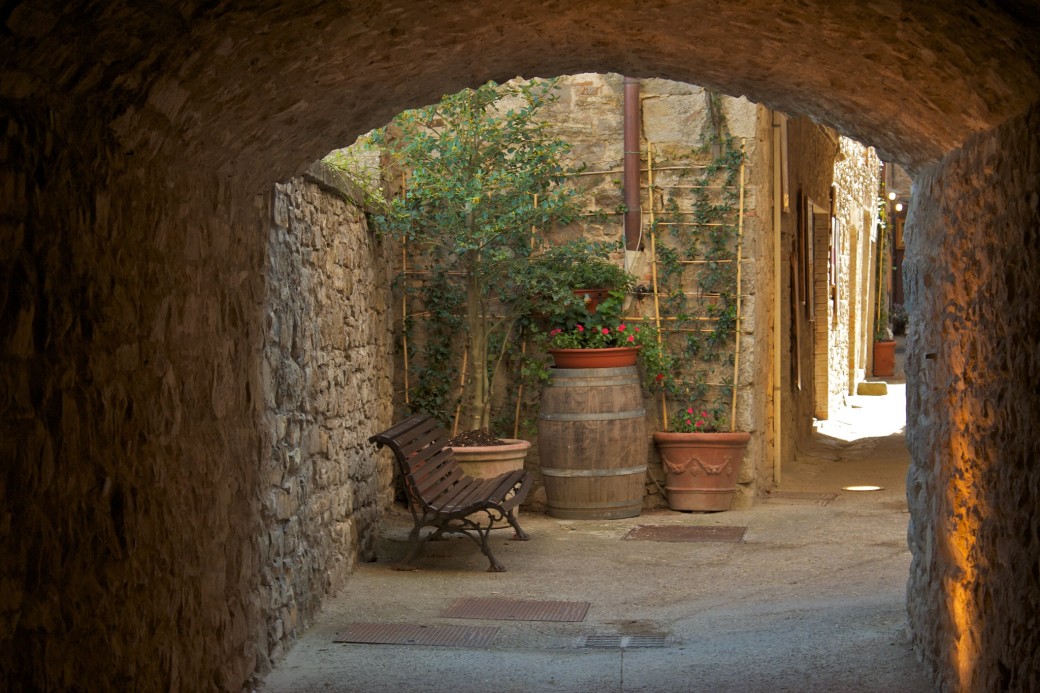 Castellina in Chianti ph Alexander Baxevanis
Castellina in Chianti ph Alexander BaxevanisWHAT TO SEE IN CASTELLINA IN CHIANTI:
Chiesa del Santissimo Salvatore
Via Toscana, 10
It is a VI century church which was rebuilt after the II World War devastation. Among the many works, inside the church is possible to admire a Renaissance wooden statue of San Barnaba, the ancient patron saint of Castellina.
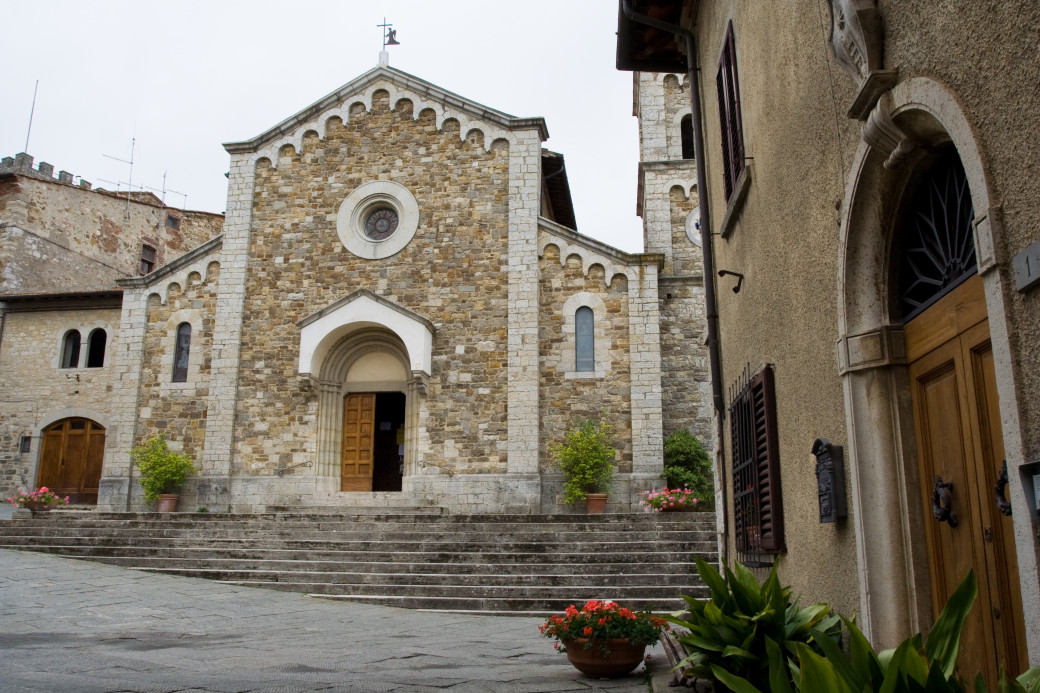 Chiesa del Santissimo Salvatore ph Marco Varisco
Chiesa del Santissimo Salvatore ph Marco VariscoCastello di Monternano
Str. Di Cispiano
The castle, of which today not much has left, was a very important strategic point. Together with Poggibonsi formed part of an insurmountable barrier for the Florentine attacks. Nowadays, even though it was partially destroyed in 1220, it is well visible its division between the eastern part, that had a residential role, and the western part, that was used as drill ground and a refuge in case of danger. Moreover, it is possible to have access to some of the rests of underground rooms and admire, apart from the city walls, what is left of some of the castle’s vaults.
Tumulo di Montecalvario
SR 222 Chiantigiana, 17
ph. +39 0577 742090
The Etruscan tomb is situated in the historic center of Castellina and it is dated back to the XI century. It is characterized by four mortuaries open to the visitors. The tomb was discovered in the XVI century but, due to the inappropriate conservation, it was looted of many valuable artifacts in 1900. The Etruscan “wagon”, one of the most interesting findings, was rebuilt and exhibit at Castellina’s Meuseum.
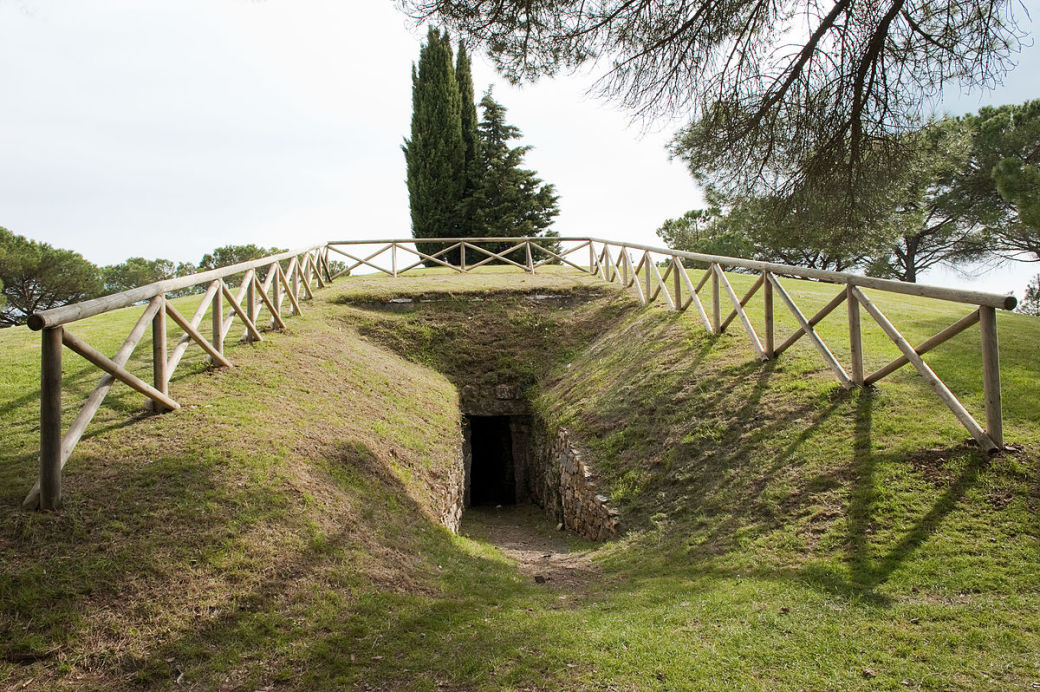 Tumulo di Montecalvario
Tumulo di MontecalvarioEcomuseo del Chianti
Via delle Cerchia, 5
ph. +39 0577 227352
It is born thank to a project instituted in 2004, in collaboration with the others Chianti’s cities. Ecomuseo del Chianti is a museum which offers itineraries and meetings aimed to increase the territory sustainable development and widen the knowledge about it through activities that include both the citizens and the tourists.
Museo archeologico del Chianti Senese
Piazza del Comune, 17
ph. +39 0577 742090
It is situated in Piazza del Comune, in the historic city center of Castellina. The museum offers interactive services and videos which show and explain the territory history and its ancient population. The museum tour is divided in four rooms and describes the city thank to the big heritage that comes from the local archeological areas.
Riserva Naturale Bosco di S. Agnese
Località Granaio, 30
The ones who loves nature cannot miss the nature reserve and its “cipressetta”, one of the only three existent “cipressetta” in Italy. Indeed, the cypress is the protagonist but, together with other species of plants, shapes this historical monument which is the S. Agnese forest.
Chiesa di San Jacopo a Pietrafitta
Località Pietrafitta
The church is situated on the highest position of the ancient medieval hamlet and nowadays not much is left (just its foundations). It was rebuilt in 1927 thank to Alfredo Barlacchi who was that time parson but, as early as the 1990s, it was closed by Fiesole’s curia. To date, it has been totally renovated and reopened to the public since 2013.
WHAT TO SEE IN THE SORROUNDINGS OF CASTELLINA IN CHIANTI
Colle Val d’Elsa
Colle Val d’Elsa is situated right in the heart of Tuscany and it has a strategic position between Siena, Florence and Volterra. Here you can visit the three autonomous medieval hamlets in all their beauty and historicity (Borgo di Santa Caterina, Castello di Piticciano, Piano). Colle Val d’Elsa is famous for its typical products (wine, cheese, cold cuts) and for glass production (it is also called the Crystal City).
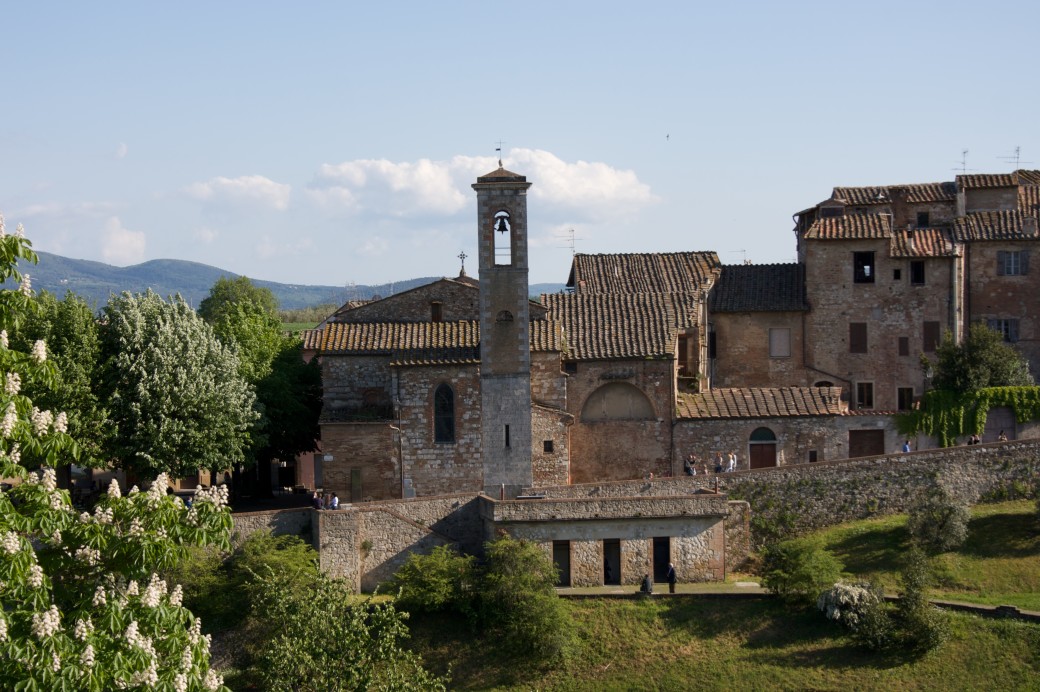 Colle Val d'Elsa ph Giovanni Volpato
Colle Val d'Elsa ph Giovanni VolpatoMonteriggioni
It is a small town in the senese area known for its castle and the walls that surround it, which are open to everyone who want to have a look at the marvelous senese landscape from the high of the Mount Ala.
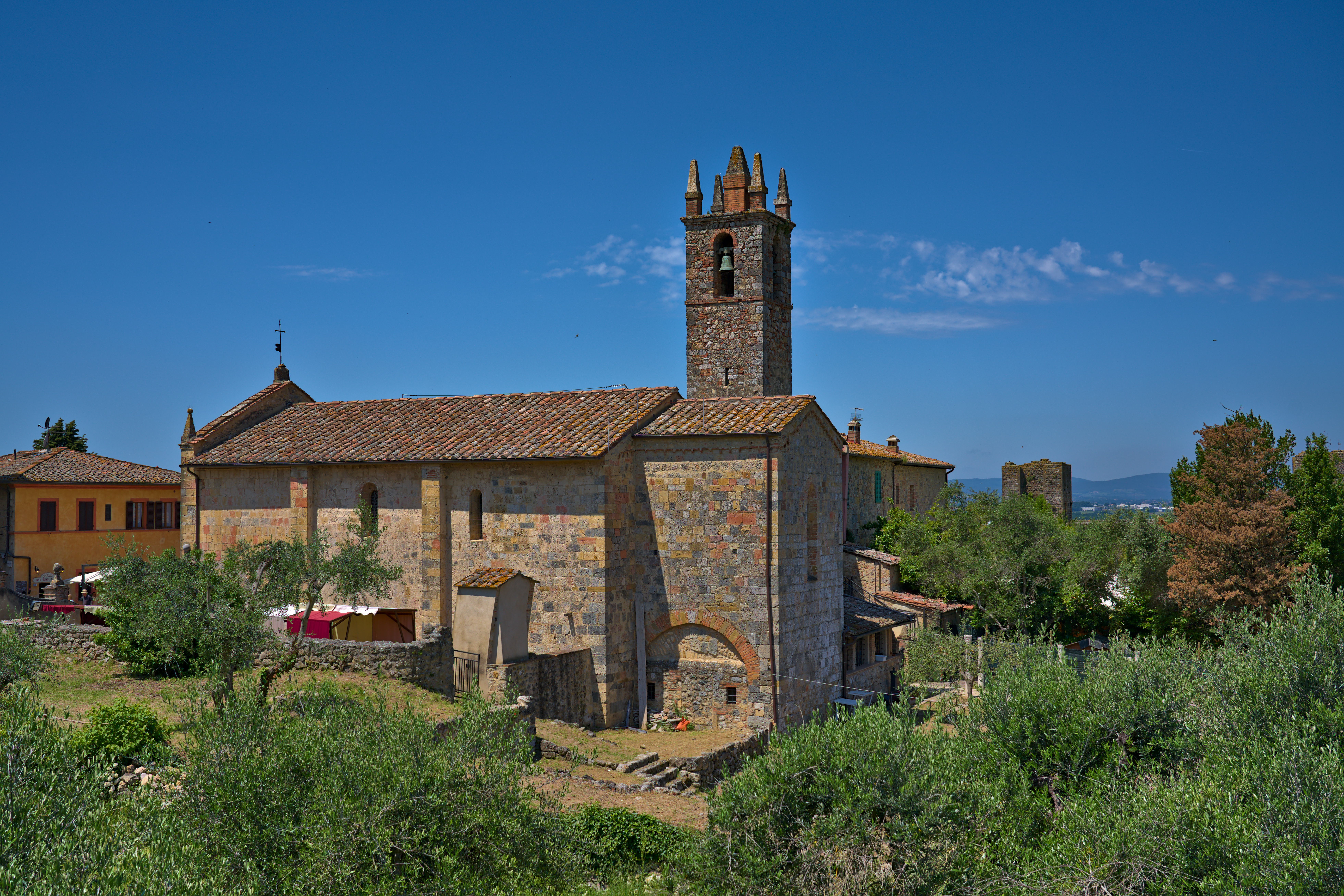 Monteriggioni ph Peter Stenzel
Monteriggioni ph Peter StenzelSicelle, La Piazza and Tregole
Sicelle, La Piazza and Tregole are three location where you can discover other beautiful monuments, medieval hamlets and landscapes. Sicelle marks the border with Tavarnelle Val di Pesa, Siena and Florence and, following a route between vineyards and woods, you can arrive to La Piazza. Tregole is situated in the northeastern area of the territory, near to the Etruscan cemetery of Poggino di Fonterutoli.
Radda in Chianti
It is a small medieval hamlet in the province of Siena famous not for its size but for the atmosphere that you can feel inside its walls and for its breathtaking landscape. To know what to see in Radda in Chianti, click here.
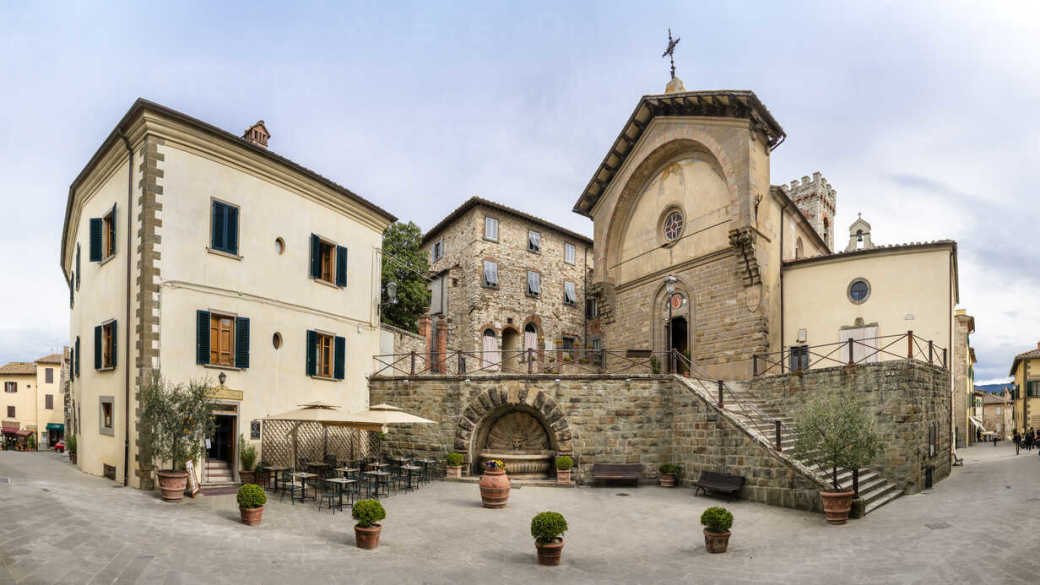 the historical center of radda in chianti
the historical center of radda in chiantiPanzano in Chianti
Panzano is another place known for its typical products and its panorama. You can enter the city from two different directions which give the opportunity to see its modern and ancient part. Click here to discover our special itinerary.
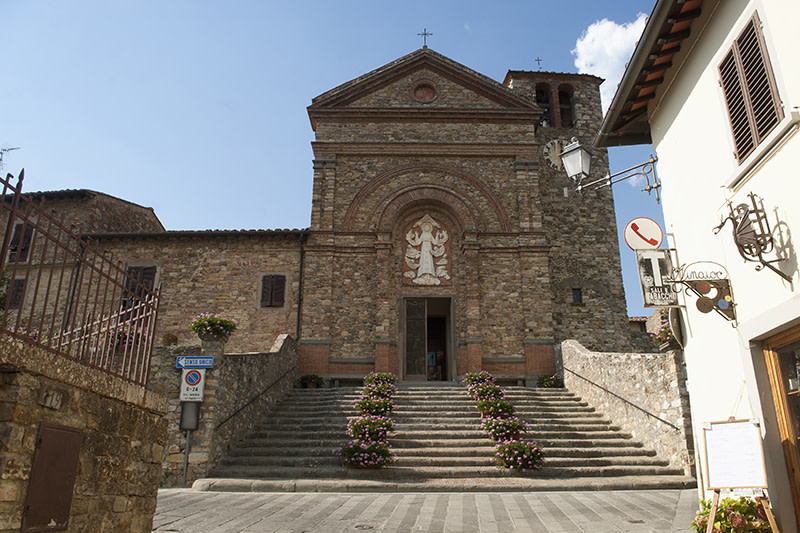 Chiesa di Santa Maria a Panzano
Chiesa di Santa Maria a PanzanoGaiole in Chianti
Gaiole in Chianti is another important stop to do in the Chianti Classico region. It is also called the “market city” and it is characterized by the big triangular square where several cultural and traditional events take place. Click here to learn more about Gaiole in Chianti.
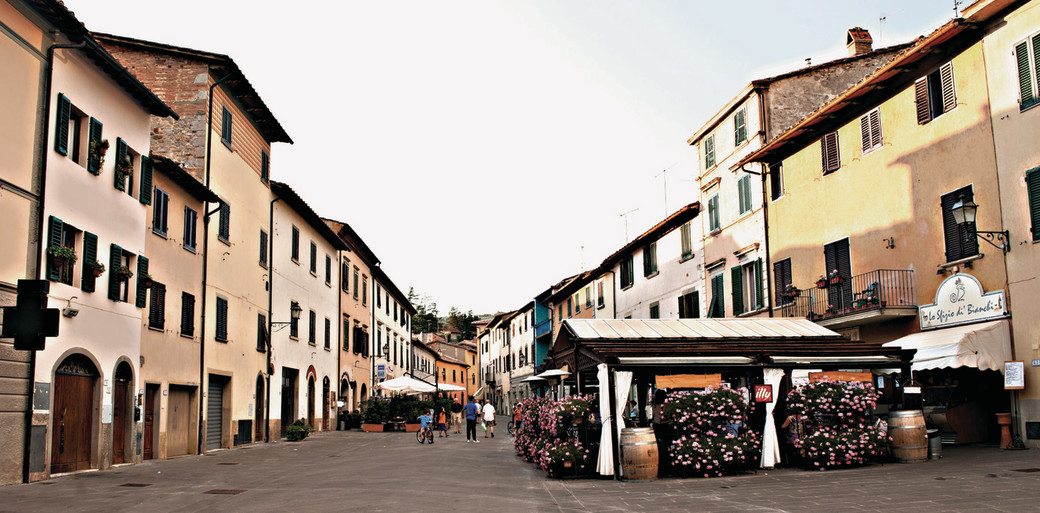 gaiole in chianti
gaiole in chiantiMontefioralle
It is a medieval hamlet which is marked out by its land and microclimate that make possible the production of distinctive wines. You cannot miss the Castle of Montefioralle, dated 931 c.ca. This town counts about 100 inhabitants and it is included in the most beautiful medieval hamlet of Italy register.
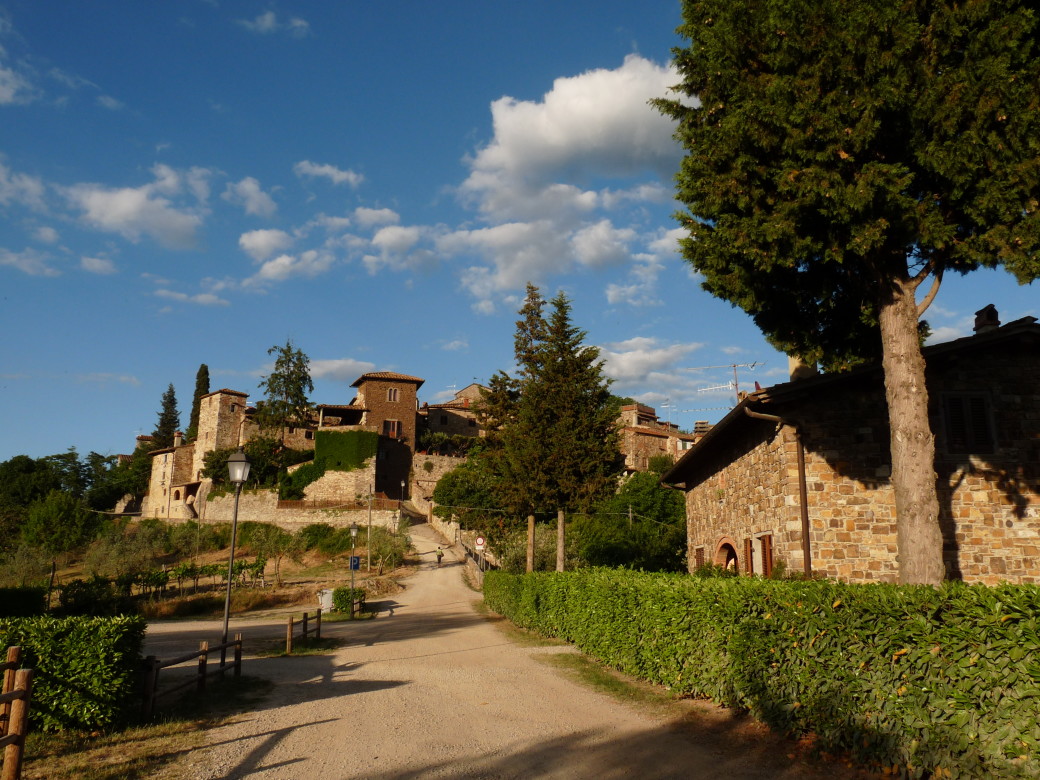 Montefioralle ph Tangelini
Montefioralle ph TangeliniCastello di Verrazzano
Via Castello di Verrazzano, 1
ph. +39 055 854243
It is situated between Siena and Florence, in the Greve in Chianti area. The castle became a property of the Verrazzano’s family in the VII century. Here you can find the ancient wine tradition and more (the property’s vineyards and olive groves are described in a 1150 manuscript of Badia di Passgnano). In 1819, the castle property went to the Marchesi Ridolfi’s family and in 1958 the cavalier Luigi Cappellini bought out the almost completely decayed estate to restore it. Nowadays the castle is an important farm holiday born to enhance the agricultural production.
Pieve di San Cresci
Via San Cresci
ph. +39 055 853126
Pieve San Cresci is located near to Montefioralle and it is thought to be dated back to the X century. Inside it you can admire marvelous decorations and frescos. Several works of the church are preserved at the Arte Sacra Museum in Greve in Chianti.
La Macina di San Cresci
Località S. Cresci, 1
ph. +39 055 8544793
It is placed inside the Pieve San Cresci territory and it is the home of several cultural events and represents the home for many artists.
WHERE TO EAT IN CASTELLINA IN CHIANTI AND SORROUNDINGS:
Before discovering the best restaurants in Castellina, click here if you want to know our selection of the best restaurants in Chianti, click here if you want to know our selection of restaurants around Florence and here for that of the most beautiful wineries where to eat in Tuscany.
Ristorante le Tre Porte
Via Trento e Trieste, 8
ph. +39 0577 741163
Distinguished by its rustic style and its terrace overlooking the Chianti hills, the restaurant has been offering for over 20 years a traditional cuisine revisited with a modern twist by using local products.
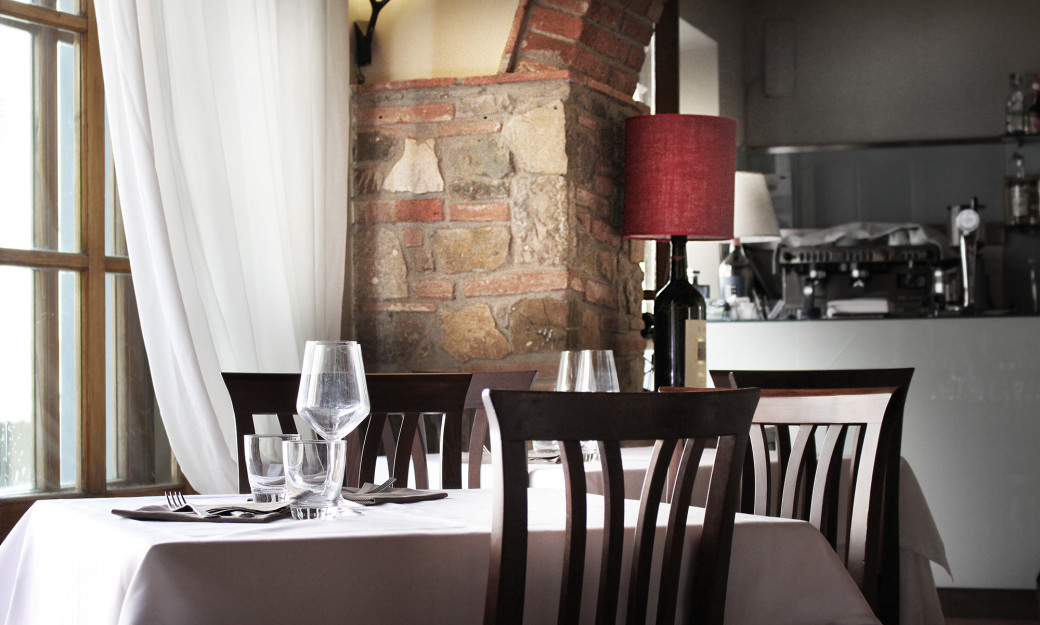 Ristorante le Tre Porte
Ristorante le Tre PorteRistorante Albergaccio di Castellina
Via Fiorentina, 59
ph. +39 0577 741042
Since 1989 the restaurant offers to its guests a cuisine that mixes tradition with innovation thank to a seasonal menu to stand out the local products (Chianina IGP meat, cold cuts and cheese made by the bordering farms, ancient grain and organic homemade pasta). If you are gluten intolerant the restaurant offers a wide choice of gluten free products. Thanks to the owner’s devotion the restaurant has been awarded with a Michelin Star.
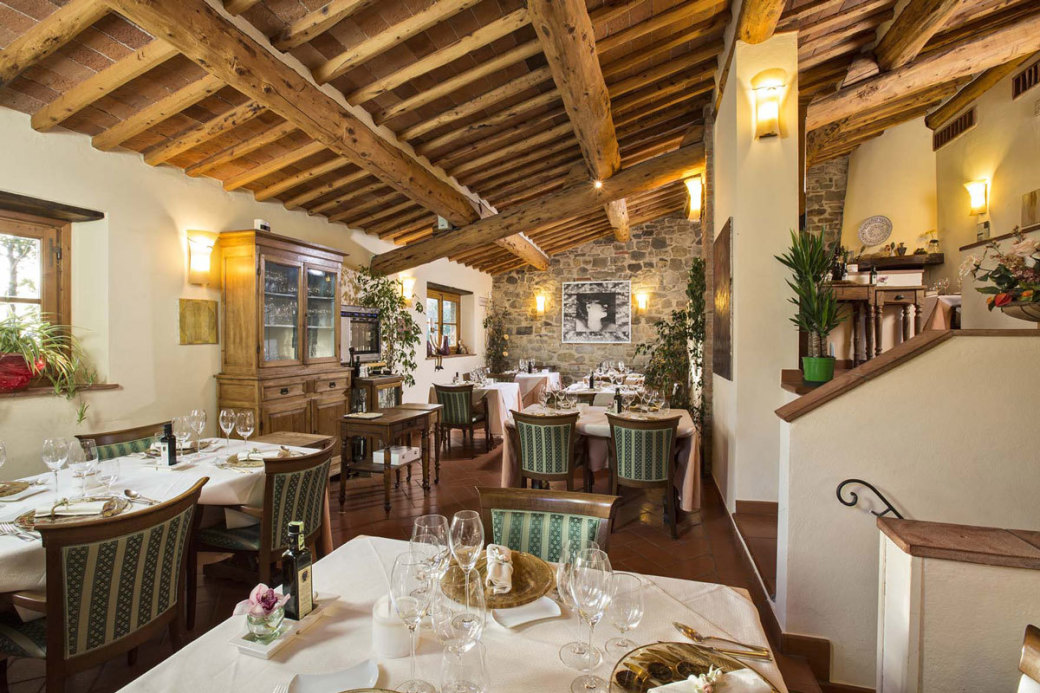 ristorante albergaccio
ristorante albergaccioRistorante Tavola di Guido
Località Le Piazze, 41
ph. +39 0577 743192 / +30 3510205716
Chef Haverkock and his team welcome you in this beautiful restaurant characterized by a big terrace and a garden. Here you can find local and fresh products and a menu that changes following the chef creativity and its desire to try new cooking techniques and combinations.
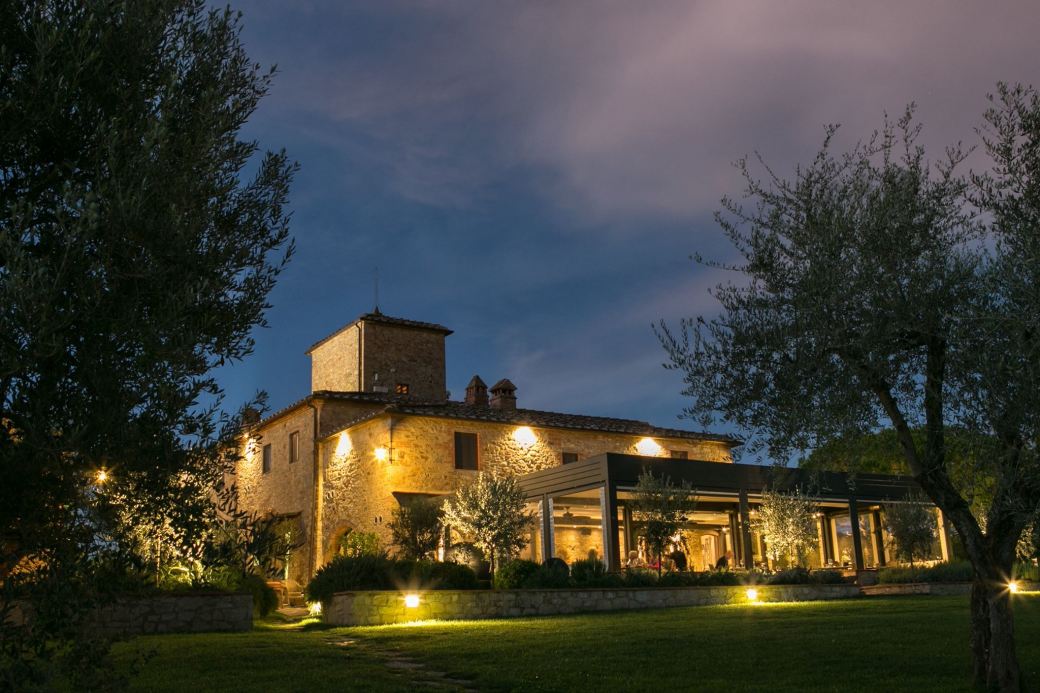 Ristorante Tavola di Guido
Ristorante Tavola di GuidoVia Giacomo Puccini, 4
ph. +39 0577 741125
Respecting the nature, Osteria di Fonterutoli offers a menu made only with local and seasonal products, with an eye on game. Moreover, every day (by reservation) the guests can participate to cooking classes which will be followed by a lunch all together.
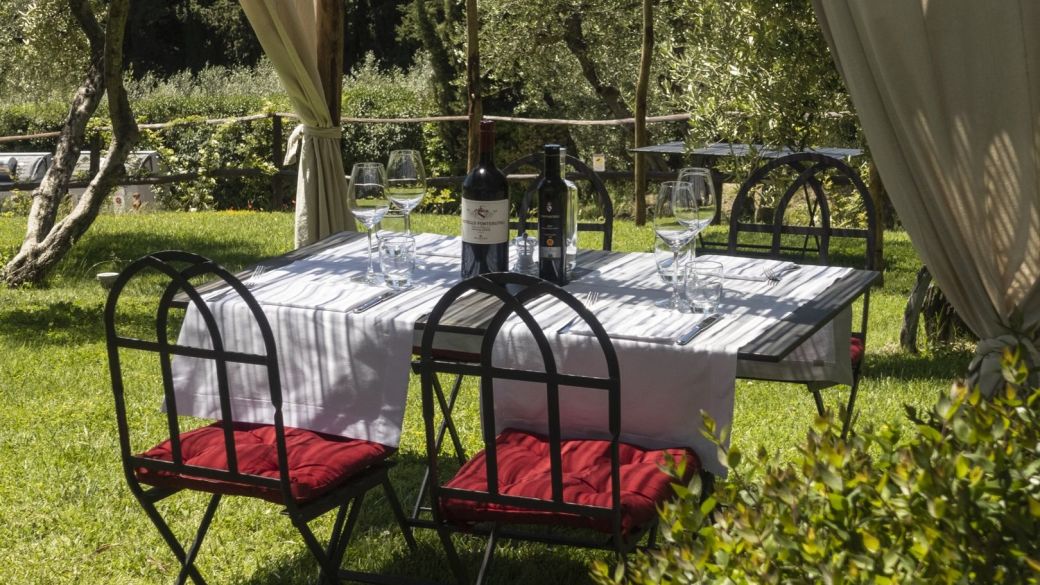 Osteria Fonterutoli
Osteria Fonterutoli Foresteria Villa Cerna
Loc. Casina dei Ponti, 57
ph. +39 333 9558232 / +39 0577 544620
The restaurant is surrounded by vineyards and offers a traditional Tuscan cuisine matched with local and national wines. Foresteria Villa Cerna has also a wine shop and a store, more informal places where you can taste and buy local products. There is also the possibility to do guided tours and wine tasting at Casa Cecchi’s canteen.
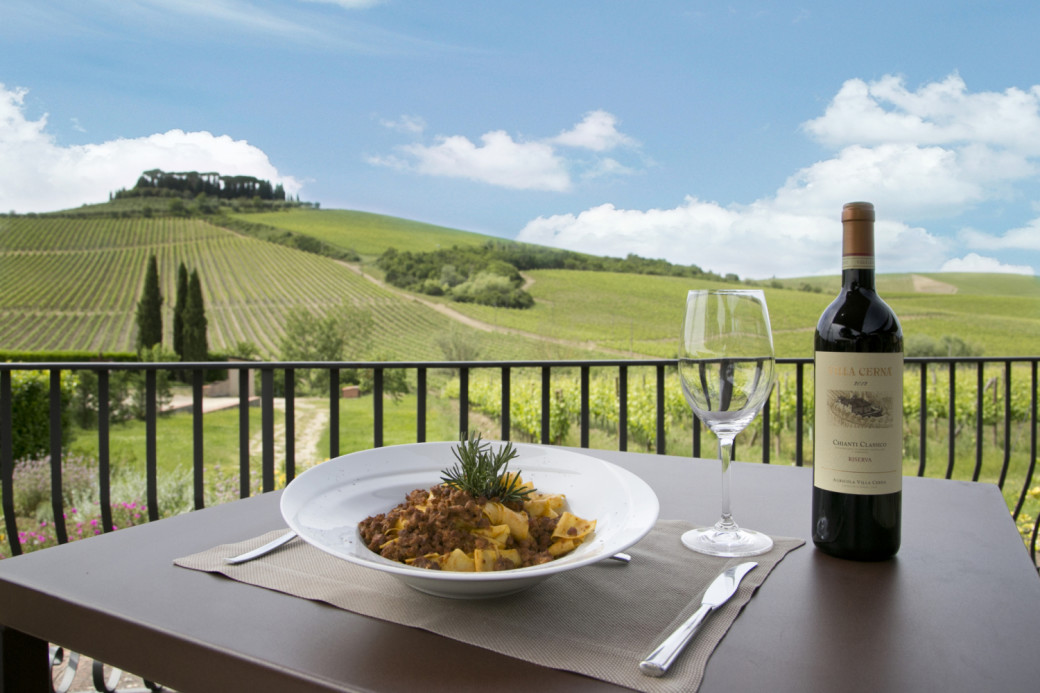 La Foresteria di Villa Cerna
La Foresteria di Villa CernaWINERIES IN GREVE IN CHIANTI AND SORROUNDINGS:
Bucciarelli Antico Podere Casanova
Località La Piazza, 41
ph. +39 0577 749756 / +39 335 8773010
Bucciarelli’s farm is situated halfway between Siena and Florence and it is famous, besides the excellent wine, for EVO oil which has the organic certification. The soil extends for about 23 acres and 13 of them are cultivated in Sangiovese. The most produced types of wine are: Chianti Classico DOCG and Riserva DOCG. Immersed into the green of the territory you can also find the Antico Podere Casanova which can host, thank to its 3 apartments, everyone who wants to enjoy the panorama and relax.
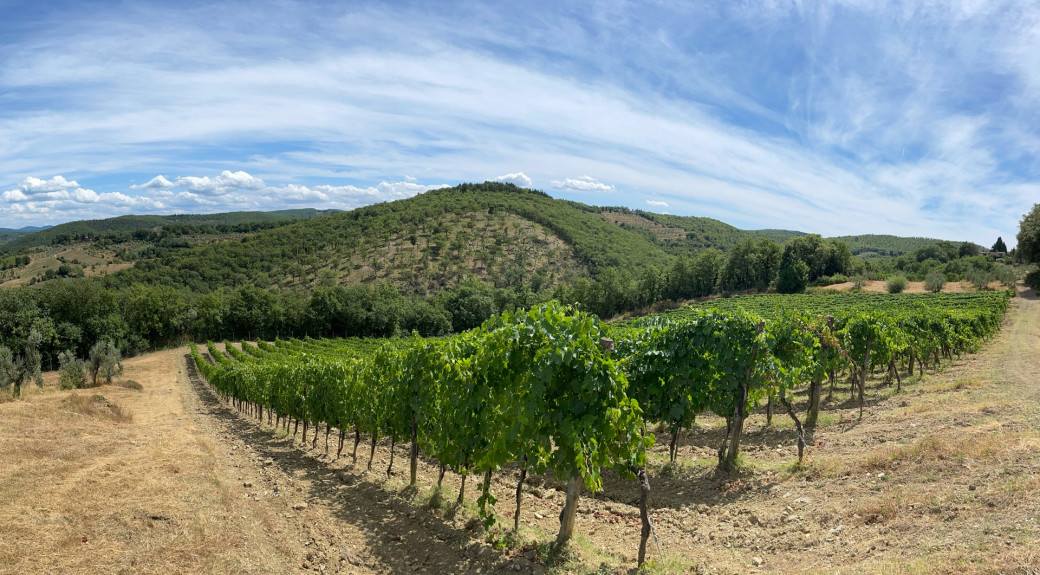 Bucciarelli Antico Podere Casanova
Bucciarelli Antico Podere CasanovaRocca delle Macìe
Località Le Macìe, 45
ph. +39 0577 7321
Rocca delle Macìe is characterized by the precision work during the whole production process. Inside it is divided in more sections (Cantina Vecchia, Bottaia, Barriccaia) in order to guarantee the continuity of the vineyard’s production phases. Apart from wine, Rocca delle Macìe produces also Vinsanto.
San Fabiano Calcinaia
Località Cellole
ph. +39 0577 979232
The farm extends for 165 acres and it is divided in 2 units: the first one is situated in Poggibonsi and the second one in Castellina in Chianti. Guido Serio and his wife are at the head of the company since 1983 and they work hard to produce high quality wines exclusively made with their property grapes. In 2009, they decided to turn into organic to combine quality and sustainability. At San Fabiano Calcinaia are also available villas and apartments with pool.
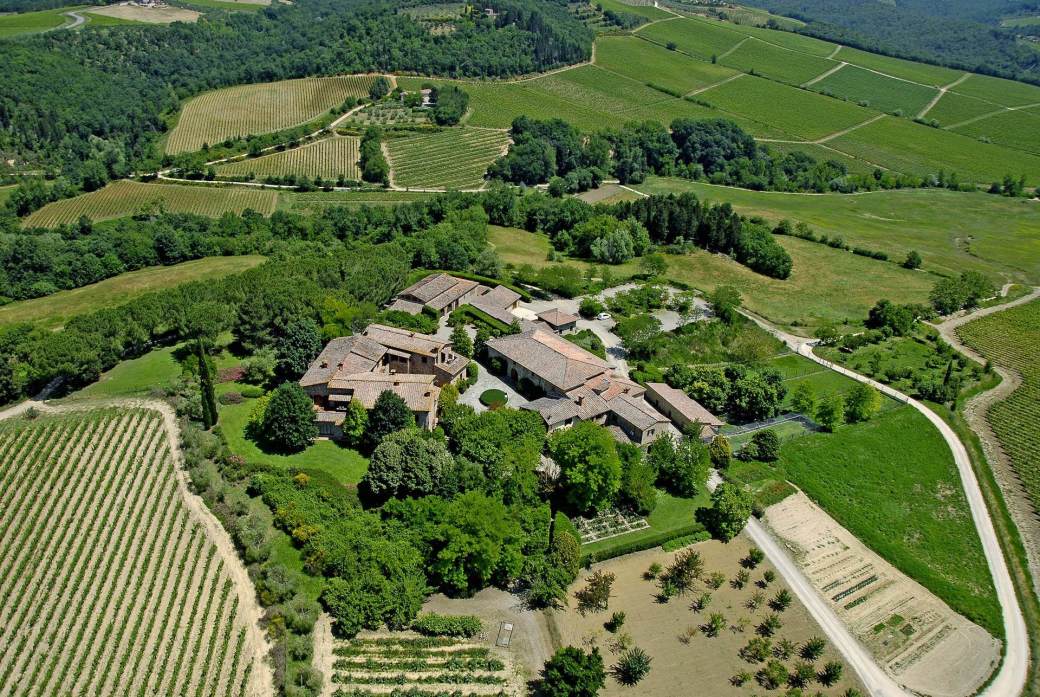 San Fabiano Calcinaia
San Fabiano CalcinaiaANNUAL APPOINTMENTS:
Chianti Festival
During summer time enjoy a rich events calendar among music, theatre and more in Chianti’s squares.
Chianti d‘autunno
It takes place in Castellina and surroundings during fall season and it supposes wine tasting, music and typical street markets.
Premio letterario Chianti
The literature award is hold in March since 2011 and its register boasts many of the greatest contemporary literature names.
Car parks:
Parking 1, Via Chiantigiana, Camper Area (unattended)
Parking 2, Via del Cantinone (unattended)
Parking 4, Via IV Novembre, South Car Park (unattended)






